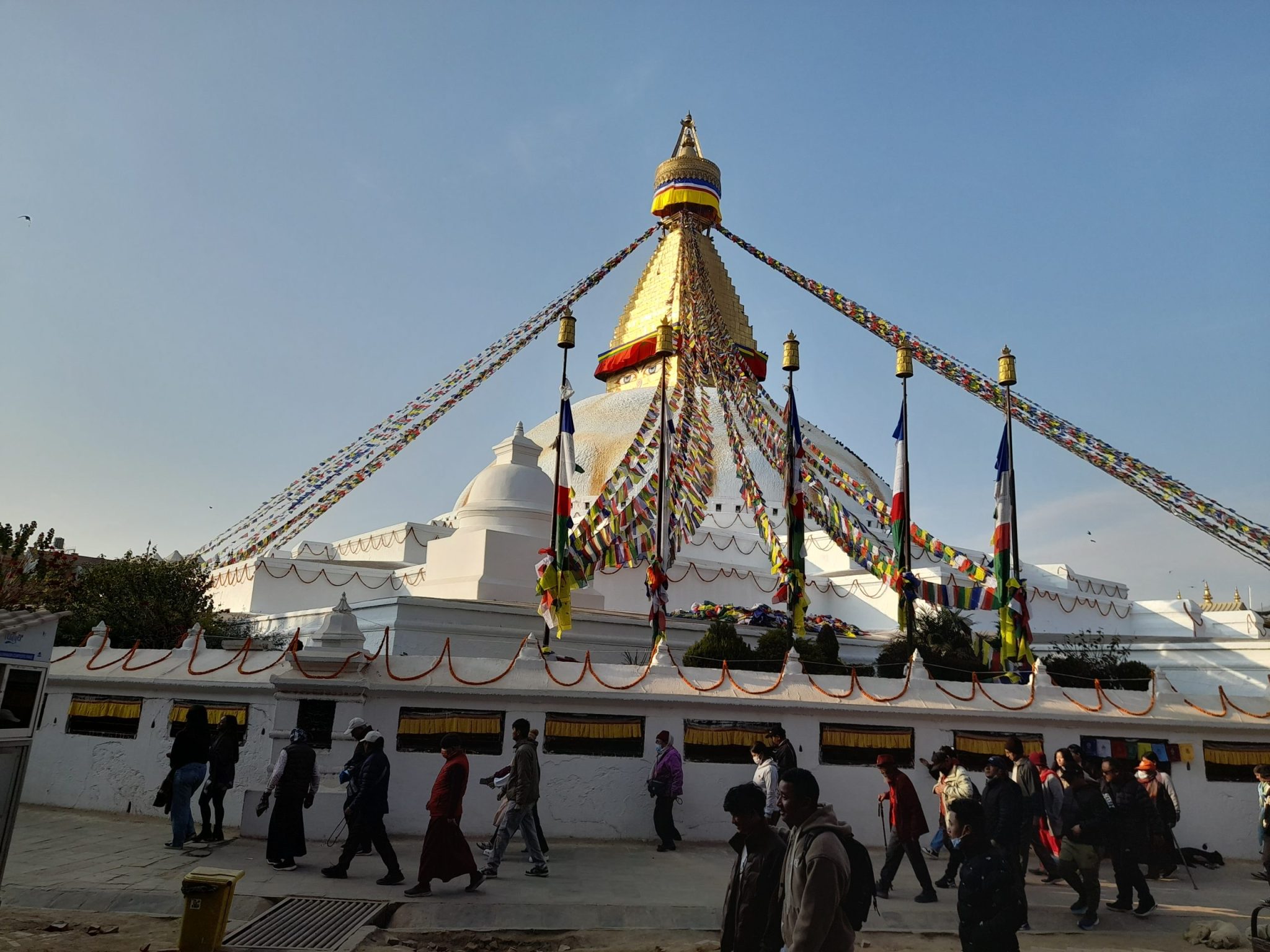Nepal Visa:
Most visitors to Nepal require a visa, which can be obtained upon arrival at Tribhuvan International Airport in Kathmandu or at land border crossings.
Tourist visas are typically valid for 15, 30, or 90 days, with single or multiple entry options available.
Visa fees vary depending on the duration of stay and type of entry required.
It’s advisable to check the latest visa requirements and fees before your trip and ensure that your passport is valid for at least six months from the date of entry into Nepal.
By considering these factors and being prepared accordingly, you can make the most of your Culture and Safari Tour in Nepal, enjoying the rich cultural heritage and natural beauty of this captivating destination.
Weather and Climate:
Nepal experiences diverse climates due to its varying topography. In Kathmandu and the Kathmandu Valley, the weather is generally mild with distinct seasons.
Spring (March to May) and autumn (September to November) are considered the best times to visit Nepal, as the weather is usually clear and temperate.
During the safari in Chitwan National Park, expect warmer temperatures and high humidity, especially during the summer months (June to August).
Nagarkot, being at a higher elevation, can be cooler, especially in the mornings and evenings.
Temperature:
In Kathmandu and Nagarkot, temperatures can range from mild to warm, with daytime temperatures averaging between 20-30°C (68-86°F) during the spring and autumn months.
Chitwan experiences higher temperatures and humidity, with daytime temperatures often reaching 30-35°C (86-95°F) during the summer.
Nighttime temperatures in Chitwan may still be warm, hovering around 20°C (68°F) or higher.
Clothing:
Pack lightweight and breathable clothing for Kathmandu and Nagarkot during the warmer months.
For Chitwan, bring light, long-sleeved clothing to protect against mosquitoes and sun exposure. Quick-drying, moisture-wicking fabrics are ideal for jungle activities.
During the cooler months or evenings, a light jacket or sweater may be necessary, particularly in Nagarkot.
Comfortable walking shoes are essential for exploring cultural sites and navigating jungle trails.
Nepalese Meals:
Dal Bhat: Considered the national dish of Nepal, dal bhat consists of steamed rice (bhat) served with lentil soup (dal), vegetables (usually sautéed greens), and often accompanied by pickles, chutney, and sometimes meat or fish.
Momos: These are Nepalese dumplings, typically filled with minced meat (such as chicken, buffalo, or pork) or vegetables, and steamed or fried. Momos are often served with a spicy dipping sauce and are a popular street food snack.
Thukpa: A hearty Tibetan-style noodle soup, thukpa is made with wheat noodles, vegetables, and sometimes meat (such as chicken, beef, or yak). It’s flavored with spices and can be enjoyed as a warming meal, especially in colder regions.
Newari Cuisine: Newars, an indigenous group in the Kathmandu Valley, have a rich culinary tradition. Newari cuisine includes specialties like “choila” (marinated grilled meat), “bara” (fried lentil patties), and “yomari” (sweet dumplings filled with molasses or sesame seeds).
Dhido: A traditional Nepali dish made from buckwheat or millet flour, dhido is similar to polenta or porridge. It’s typically eaten with lentil soup, vegetables, or meat curry, and is a staple in many rural areas.
Sel Roti: A popular Nepali snack or breakfast item, sel roti is a deep-fried rice flour bread. It’s sweet and crispy on the outside and soft on the inside, often enjoyed with tea or yogurt.
Tarkari: This refers to vegetable curries or stir-fries, which are a common accompaniment to rice or bread in Nepali meals. Tarkaris can be made with a variety of vegetables, spices, and sometimes meat or lentils.
Gundruk: Fermented leafy greens, usually mustard greens or spinach, are sun-dried and then used to make gundruk. It’s often cooked with potatoes, tomatoes, and spices to create a flavorful side dish.
Chiura (Beaten Rice): A popular snack or breakfast item, chiura is made from flattened rice and can be eaten on its own or mixed with yogurt, vegetables, or spices.
Aloo Tama: A tangy and spicy curry made with bamboo shoots (tama), potatoes (aloo), and sometimes dried beans. It’s a traditional dish from the Himalayan region of Nepal.

 Kathmandu & Pokhara Tour 5 Days
Kathmandu & Pokhara Tour 5 Days
 Best Nepal Tour 9 days
Best Nepal Tour 9 days
 Nepal Exotic Tour Package 13 days
Nepal Exotic Tour Package 13 days
 Transportation Services in Nepal
Transportation Services in Nepal
 Kathmandu and Chitwan Holidays – 6 days
Kathmandu and Chitwan Holidays – 6 days
 Kathamndu and Pokhara Holidays – 6 days
Kathamndu and Pokhara Holidays – 6 days
 Winter Vacation Tour – 12 days
Winter Vacation Tour – 12 days
 Nepal Adventure Tour – 7 days
Nepal Adventure Tour – 7 days
 Honeymoon Couple Tour in Nepal – 10 days
Honeymoon Couple Tour in Nepal – 10 days
 Kathmandu Short Valley Tour – 4 days
Kathmandu Short Valley Tour – 4 days
 Nepal Multi Cultural Tour – 6 days
Nepal Multi Cultural Tour – 6 days
 Kathmandu and Pokhara Tour – 6 days
Kathmandu and Pokhara Tour – 6 days
 Hindu Pilgrimage Tour – 9 days
Hindu Pilgrimage Tour – 9 days
 Nepal Exclusive tour – 9 days
Nepal Exclusive tour – 9 days
 Nepal Golden Triangle Tour 8 days
Nepal Golden Triangle Tour 8 days
 Nepal Guided Tour – 11 days
Nepal Guided Tour – 11 days
 Nepal World Heritage Tour – 9 days
Nepal World Heritage Tour – 9 days
 Kathmandu Valley Tour – 6 days
Kathmandu Valley Tour – 6 days
 Nepal Buddhist Pilgrimage Tour – 7 days
Nepal Buddhist Pilgrimage Tour – 7 days
 Nepal Package tour – 12 Days
Nepal Package tour – 12 Days



